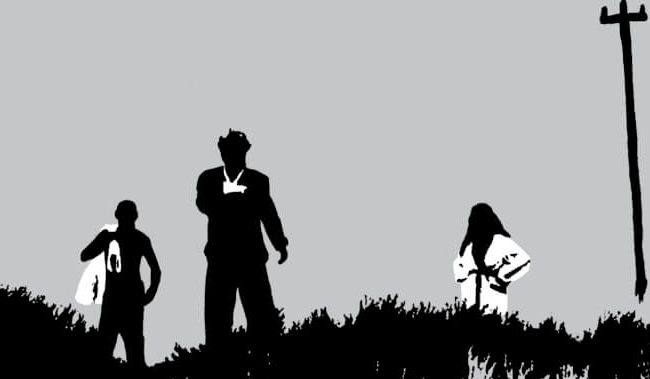
Disc Reviews
Cul-de-Sac (1966) Blu-ray Review

In 1965 Polish director Roman Polanski made his first film outside of Eastern Block Poland, Repulsion. The film starred French star Catherine Deneuve and is the story of a young beautiful and innocent French woman living in Chelsea, Swinging London. She begins to have nightmarish visions in her apartment and it turns out she is terrorized by her own mind and is in the advances stages of schizophrenia. For his next film, made a year later Polanski turned out was to be a very original drama with strong elements of macabre black comedy. It was never, as Polanski attests to on one of the extras on the disc made as a commercial success. He chose a similar crew and the same small studio (Compton-Tekli) to make the film he had on Repulsion. He takes them with him and shot the entire film on location on Holy Island, Lindisfarne off the north east coast of Northumberland.
The film centers on two gangsters who arrive on Holy Island and disrupt the odd couple who live there (played by Donald Pleasance and French actress Françoise Dorleac, sister of Catherine Deneuve and was cast in the role last minute shortly before filming commenced). Both men are wounded following a robbery gone wrong and their car breaks down on the causeway near the island. One of the men, Dickey (Lionel Stander) leaves the more severely injured Albie (Jack MacGowran) in the car while he goes for help. Living in the castle on the island are an oddly matched couple, George and Theresa who have been married for less than a year. She is younger than him and he has sold off his business to live in solitude. She meanwhile, is having an affair with a local man across the bay. The vulgar, crude and crass Dickey finds the couple frolicking with George dressed in drag and with make-up on (preempting his emasculation at the coming situation). Dickey doesn’t ask, he takes and takes the couple, their home (the castle) and their island at gunpoint. He locks them up, abuses them and keeps them hostage. When he forces them back to help with the car, the car is mostly submerged with the changing tide. Eventually Albie dies and Dickey forces George to bury him. Meanwhile, Dickey is waiting for his boss.
On one of the extras on the disc, the 2003 documentary about the making of the film in which Polanski, cinematographer Gilbert Taylor, support actor William Franklyn, producer Gene Gutowski and Compton owner Michael Klinger talk about the challenges making the film including the trouble shooting on a cold Holy Island (even though it was shot in July/August) and how difficult gravel voiced Lionel Stander was; Polanski, in his way forgave him, recognising he was merely bringing some of his character from the film and having trouble breaking away from it. With a limited budget Polanski was able to make what could be argued as his most original film in Cul-de-Sac. Beautifully shot by Taylor in black and white (fewer films were being shot in black and white by 1966) it is lit in an often very contrasty style making good use of the leaden sky. This film may not be accessible to all but is an interesting film. Pleasance, often known for the creepy characters he often played is something of an enigma in this film. His relationship with Theresa is an odd one in which his masculinity is often under question. Released by Criterion it once again has some healthy extras including the aforementioned documentary and an interesting 1967 interview with Polanski for TV in which he talks about growing up in war torn Poland during the war and his introduction to filmmaking.
Chris Hick



